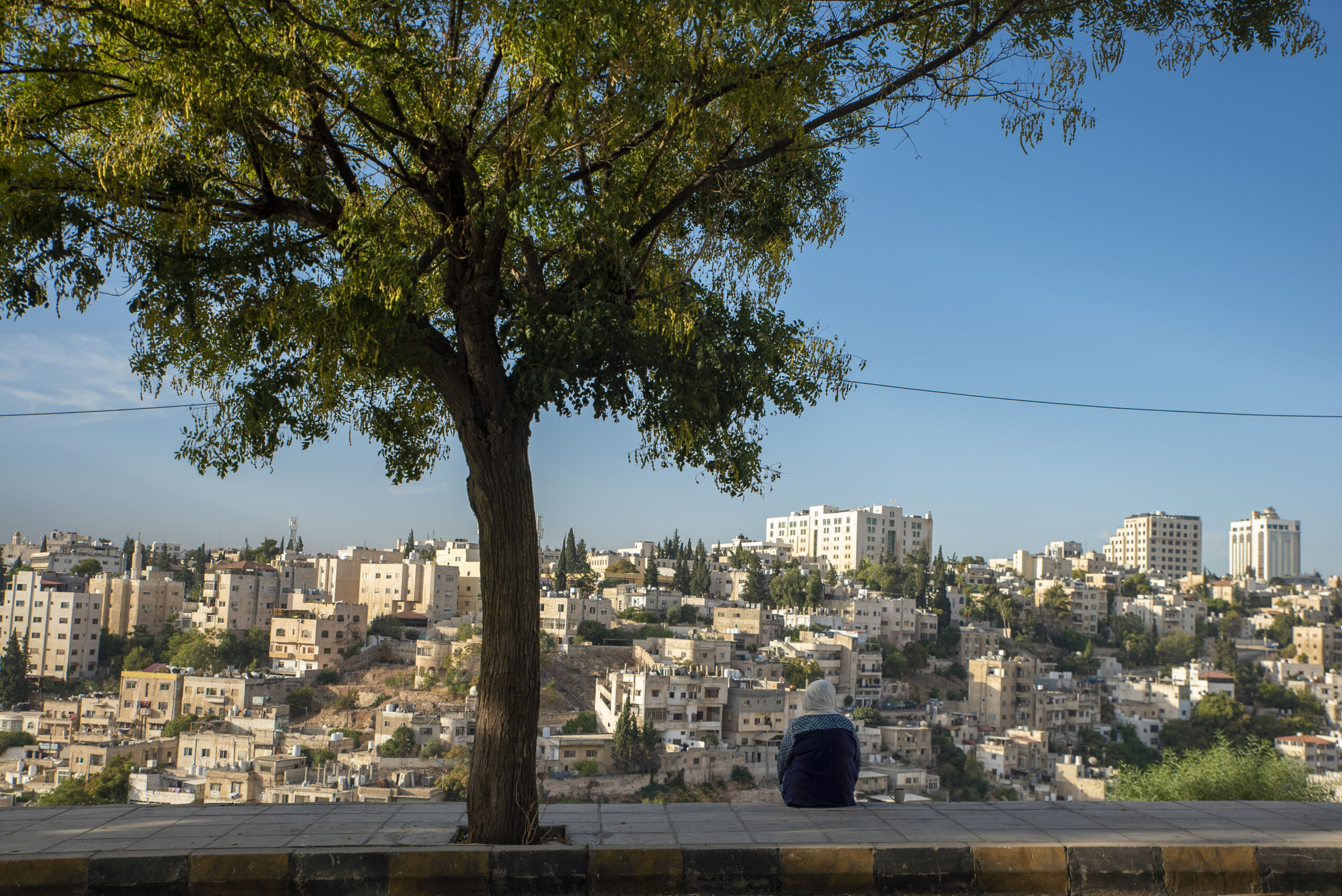Curated by AMY HALLIDAY

In his 1838 “Essay on American Scenery,” Thomas Cole—the celebrated “founding father” of the Hudson River School of American landscape painting—wrote that American landscapes are:
a subject that to every American ought to be of surpassing interest; for, whether he beholds the Hudson mingling waters with the Atlantic—explores the central wilds of this vast continent, or stands on the margin of the distant Oregon, he is still in the midst of American scenery—it is his own land; its beauty, its magnificence, its sublimity—all are his; and how undeserving of such a birthright, if he can turn towards it an unobserving eye, an unaffected heart!
Cole’s words, and paintings, are a glorious celebration of the natural world. They’re also a powerful part of the ideological construction of American nationalism in the post-Revolutionary era. The “vast continent” is every American’s “own land,” he says, and beholding it with due reverence is the proper expression of one’s citizenship. Indeed, with their overtly proprietorial point of view, these magnificent works frame an unspoken privilege: Cole’s use of the word “birthright” lies at the contradictory heart of much 19th-century American landscape painting. The painter uses the term in the broad sense of a natural or moral right, possessed by all Americans, yet precisely who counts as American—and may thus freely partake of this natural patrimony—at this historical moment is distinctly exclusionary.
The Naturalization Act of 1790 reserved naturalized citizenship for (free) whites only, thereby excluding Native Americans, indentured servants, slaves, and free blacks. The seizure of land and relocation of Native Americans proceeded throughout the 19th century, but was most concentrated in the 1830s (following the Indian Removal Act)—the very decade of Cole’s most notable output. Native Americans who appear in most 19th-century landscape paintings (like John Frederick Kensett’s The Fawn’s Leap) tend to figure as part of the natural landscape to be beheld, or as nostalgic relics of a bygone era, rather than figuring as beholders—or shareholders—in their own right.
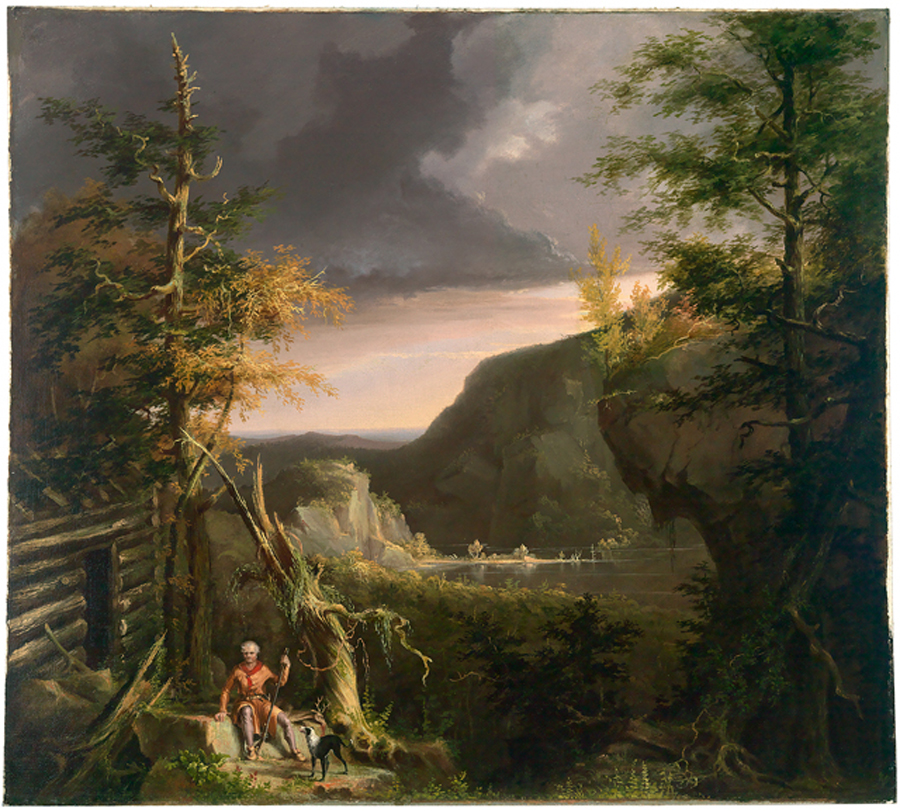
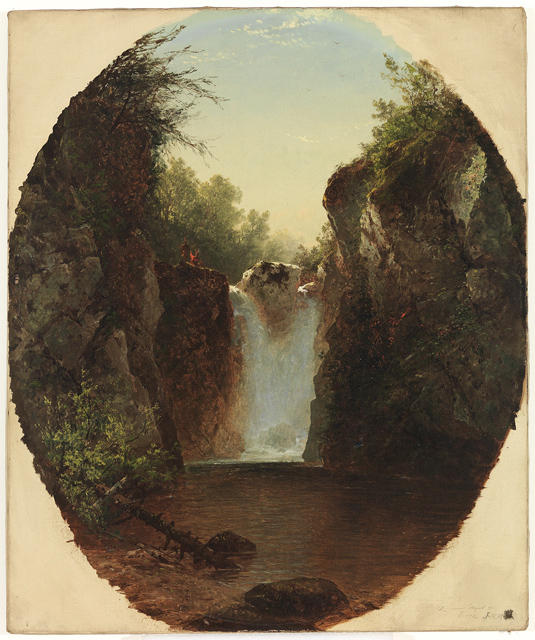
Top: Thomas Cole (American, 1801–1848), Daniel Boone at his Cabin at Great Osage Lake, ca. 1826. Oil on canvas. Museum purchase, P.1939.7
Bottom: John Frederick Kensett (American, 1816–1872), The Fawn’s Leap, 1859. Oil on canvas. Gift of Herbert W. Plimpton: The Hollis W. Plimpton (Class of 1915) Memorial Collection, 1975.101
It is within this context that the work of 19th-century African American painter Robert S. Duncanson[1] is particularly potent. In Amherst College’s Mead Art Museum is an evocative painting of Maiden’s Rock, Lake Pepin on the Mississippi River by Duncanson, who, as a “freeman of color,” was part of the thriving, cosmopolitan social milieu of mid-19th-century Cincinnati, then considered the “Athens of the West.”[2] Duncanson got his start painting portraits of influential Cincinnati citizenry who moved in abolitionist circles, but he became particularly well known for his picturesque landscape views of the Ohio River valley and further afield, earning the title of “the best landscape painter in the West” (according to the Cincinnati Gazette in 1862).
Aside from a painting that captures a scene from Harriet Beecher Stowe’s Uncle Tom’s Cabin (Uncle Tom and Little Eva, 1853), set beside Lake Pontchartrain in Louisiana, very little of Duncanson’s work makes explicit reference to race or slavery. It is through his landscape painting, however, that Duncanson claims the birthright Cole invokes: here is an individual who moves through the land with a deeply observant eye and finely honed aesthetic sensibility; here is one who—according to many contemporary accounts—is known for his ability to stir the hearts of fellow Americans. In his demonstrated affinity for the land and its depiction, Duncanson implicitly claims his birthright, his own “Americanness,” alongside Cole and other successful American painters of the 19th century.
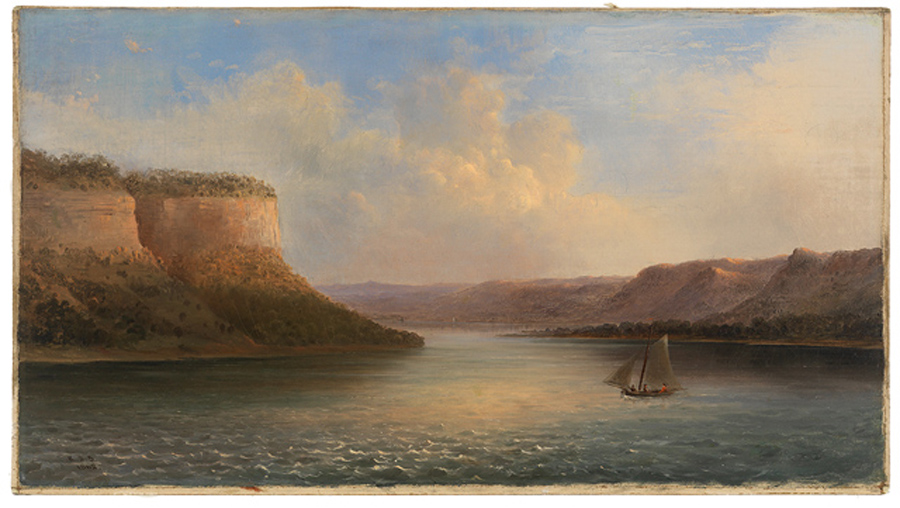
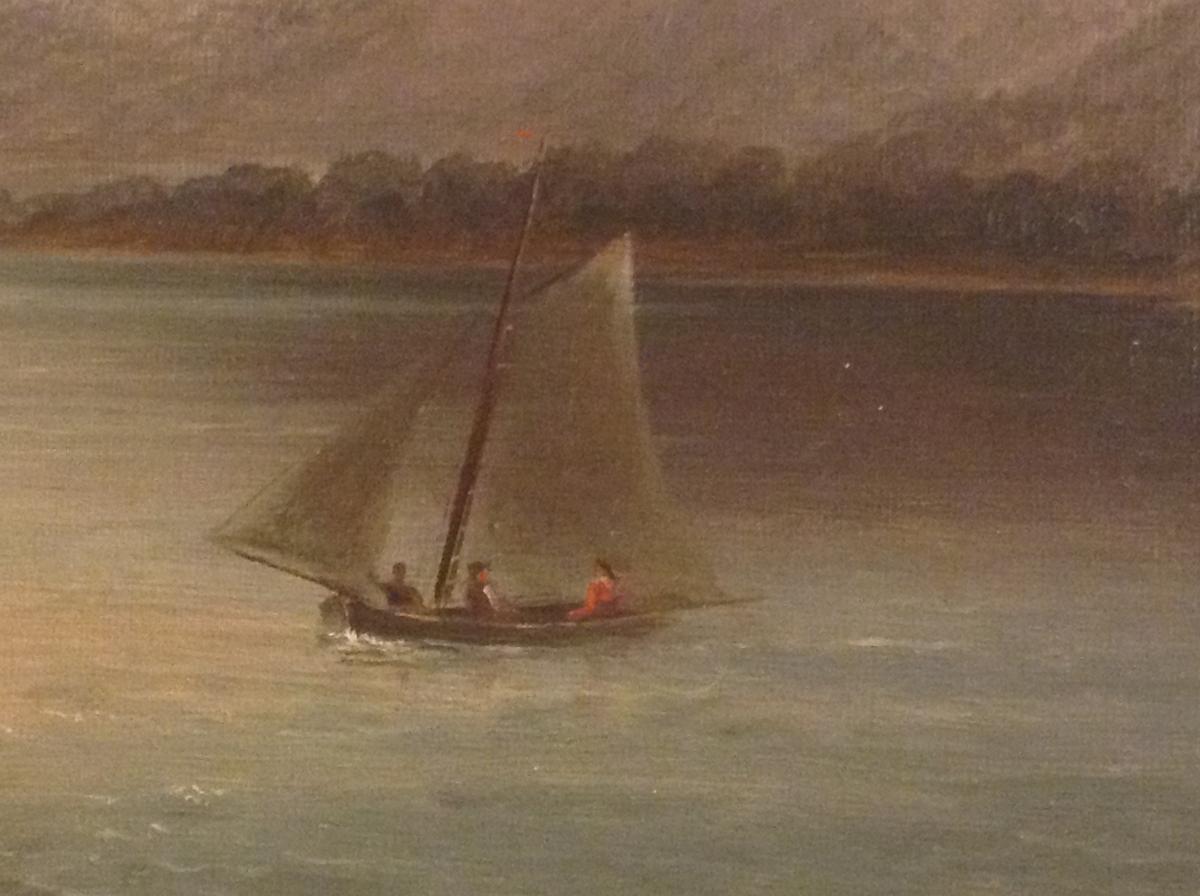
Top: Robert S. Duncanson (American, 1821–1872), Maiden’s Rock, Lake Pepin, 1862. Oil on canvas. Gift of William Macbeth, Inc., 1950.8
Bottom: Robert S. Duncanson (American, 1821–1872), Maiden’s Rock, Lake Pepin (detail), 1862. Oil on canvas. Gift of William Macbeth, Inc., 1950.8
Duncanson’s rendering of a scene of contemplative leisure on the lake that lies between Minnesota and Wisconsin is one of tranquillity—soft colors, variegated textures, and overall harmony. On close examination, the tiny sailboat appears to include an African American passenger seated on one side. For contemporary viewers it’s difficult not to “read” a scene set on the waters of the Mississippi in 1862 without considering the river’s role before and during the Civil War as a conduit not only of ideas and supplies but also, and most of all, of people—those being sought, sold, and transported; those seeking freedom and self-determination; those establishing alternative communities on or alongside the river and through its many socioeconomic tributaries. Duncanson painted Lake Pepin, on the border of Minnesota and Wisconsin, while on a sketching journey of the upper Mississippi Valley through the Union states in 1862. After a brief return to Cincinnati (where he worked his sketches into full-scale oil paintings, including Maiden’s Rock, Lake Pepin), he escaped much of the tumult of the Civil War by establishing himself in Montreal, then setting out for England and Scotland. When we look at this scene on the Mississippi, its rippling and shimmering facets remind us that even beneath the most tranquil surfaces of picturesque landscapes lies something of the flux and fluidity of American identity.
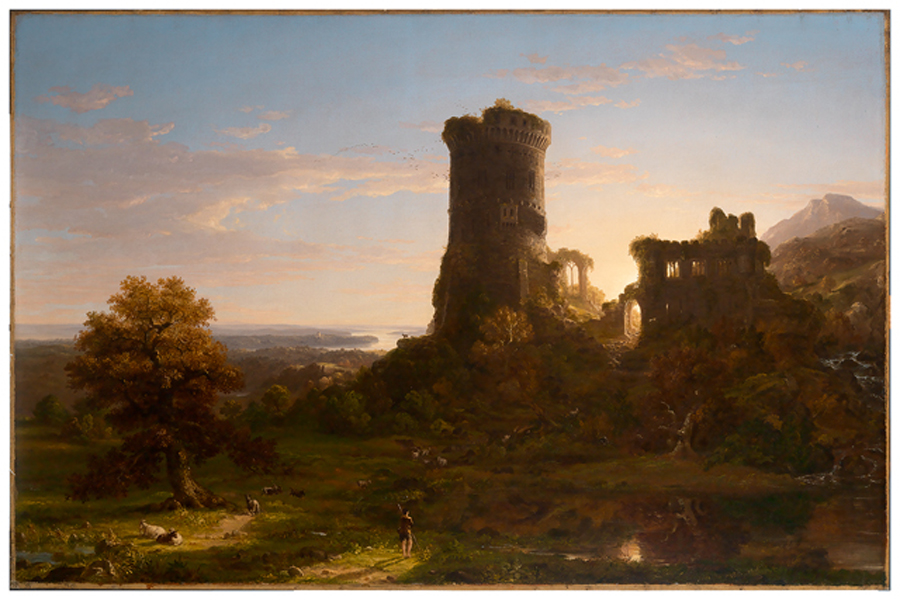
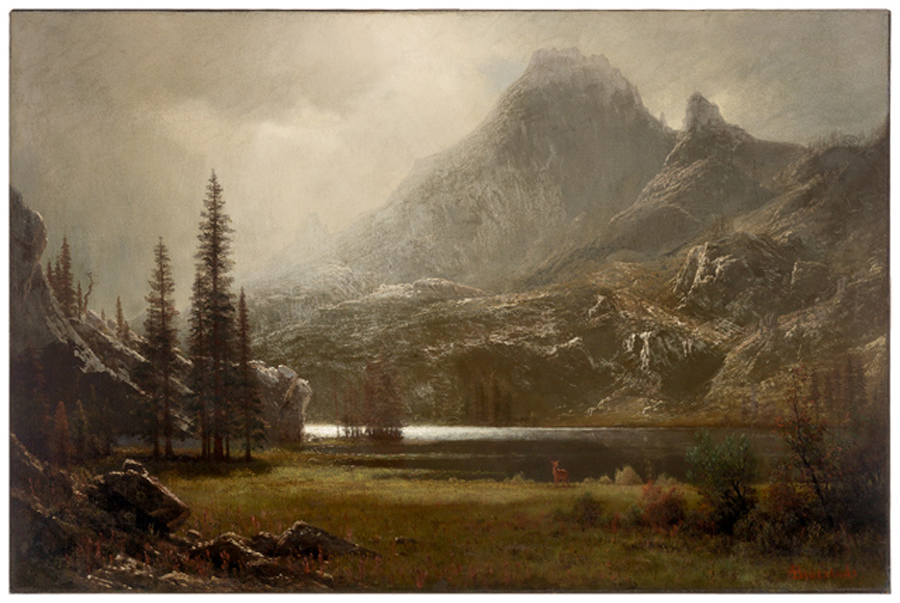
Top: Thomas Cole (American, 1801–1848), The Present, 1838. Oil on canvas. Museum purchase, 1950.190
Bottom: Albert Bierstadt (1830–1902), By a Mountain Lake (Lake in the Grand Tetons), ca. 1880-1888. Oil on canvas. Given in memory of Nathalie Hawthorne Olena by her husband, Arnold T. Olena, and their children, Laura, Douglas, Kenneth, Randy and Marnie, 2002.129
[1] The original version of this article listed this name as “Robert Scott Duncanson.” However, despite frequent reference to Duncanson’s middle name as “Scott,” Duncanson scholar Joseph Ketner II has made a compelling case that this is both factually incorrect and problematically part of a persistent myth of the artist’s genealogy. In his essay The Spiritual Striving of the Freedmen’s Sons for an exhibition of Duncanson’s art at the Thomas Cole national historic site (2011), Ketner cites a primary document uncovered by Julie Aronson, Curator of American Art at the Cincinnati Art Museum:
that notes Duncanson’s middle name as “Seldon,” not “Scott,” as is often cited, and confirms the early biography of the artist. See “Artists and the Fine Arts Among Colored People,” Repository of Religion and Literature (Indianapolis, Indiana), v. III, no. 1 (January 1860), p. 3. No other primary resource notes Duncanson’s middle name. The attribution of “Scott” to the “S” in Duncanson’s name is a 20th century construction built on the myth of the artist’s Scottish-Canadian white father.
According to Ketner’s surveys of US census data, tracking the Duncanson clan from 1820 to 1900, the artist was born to parents listed as “mulatto” and descended from freed Virginia slaves, as opposed to the widespread “oral history account of Duncanson’s father as a white Scottish-Canadian and his mother a Negro… [an account which] originated in the early 20th century” when the artist was “rediscovered” (see the full catalogue essay online at: http://www.tfaoi.com/aa/9aa/9aa554.htm). The Mead Art Museum’s database record has now been updated to reflect this research, in line with the Getty Research Institute’s Union List of Artists Names (ULAN).
[2] Joseph D. Ketner, The Emergence of an African-American Artist: Robert S. Duncanson, 1821–1872 (Columbia: University of Missouri Press, 1993) 1–2.
Amy Halliday is acting curator of academic programs at the Mead Art Museum, Amherst College.

